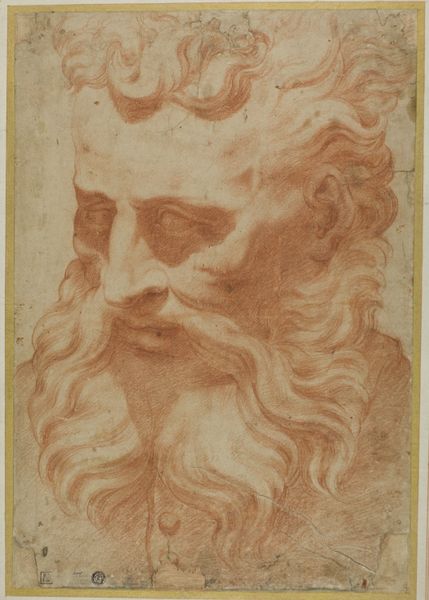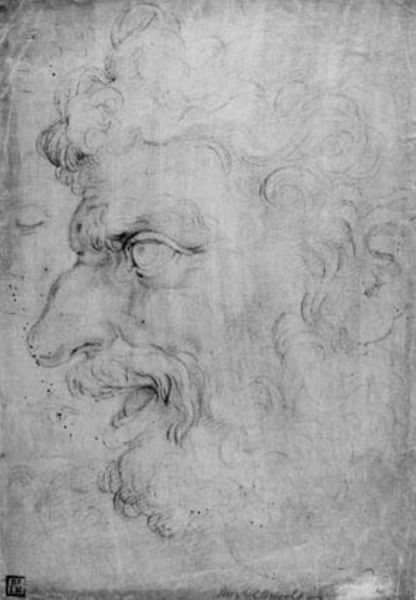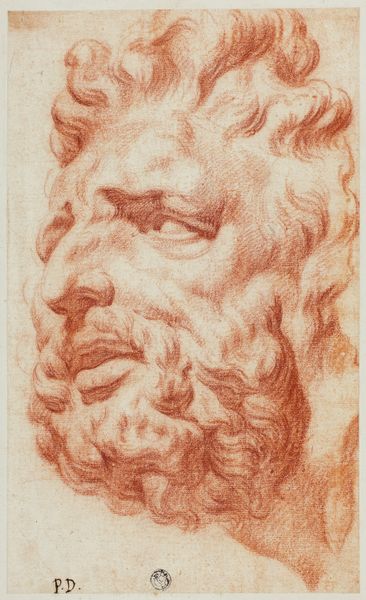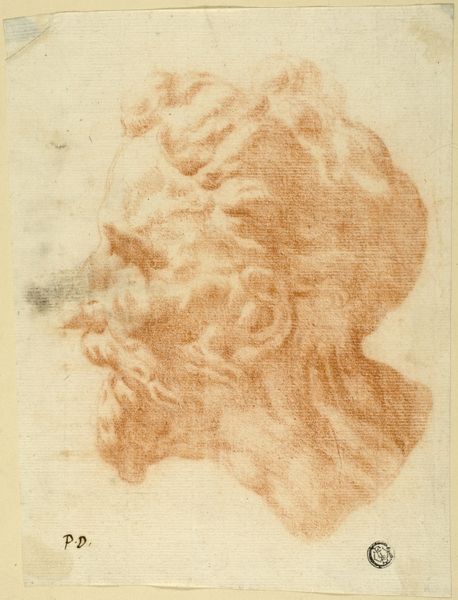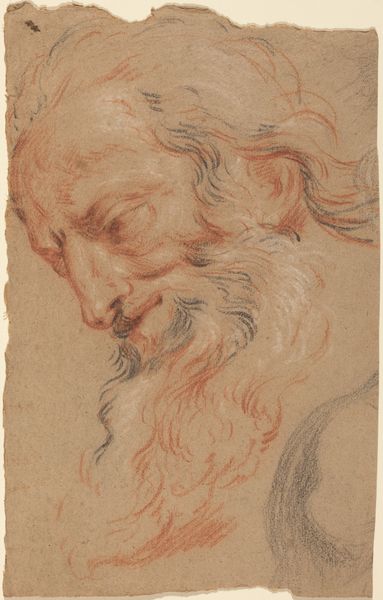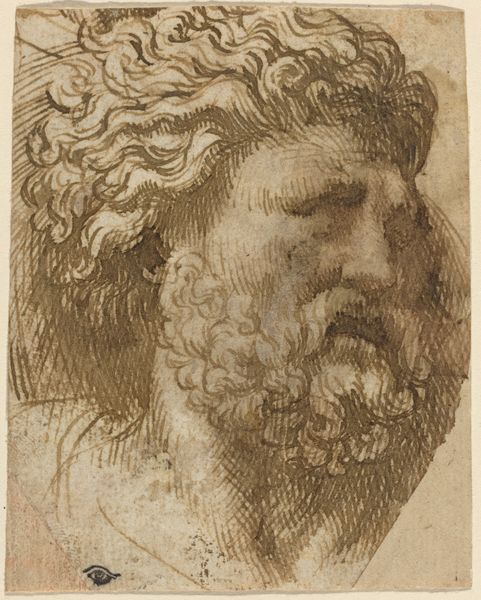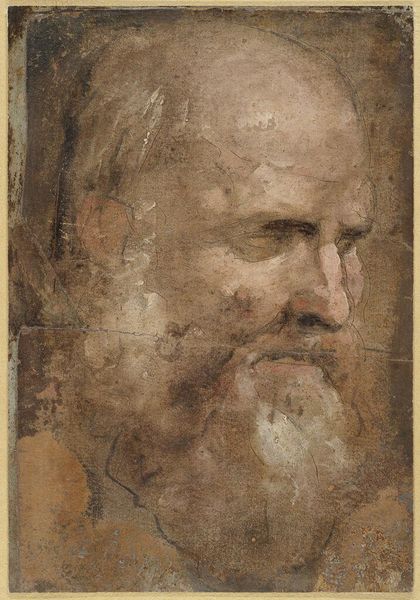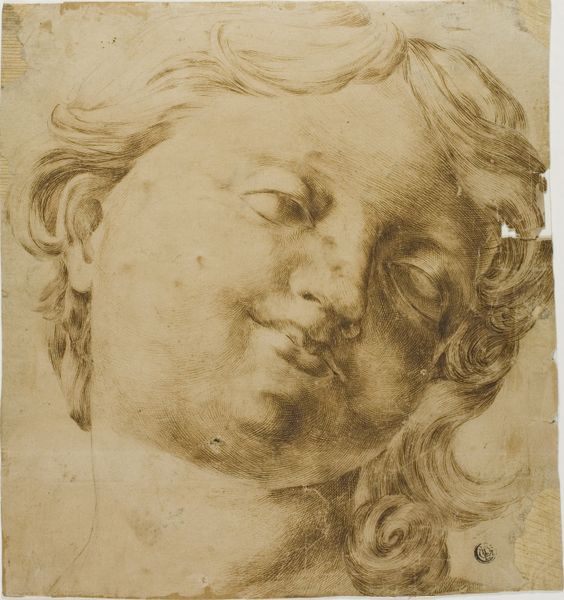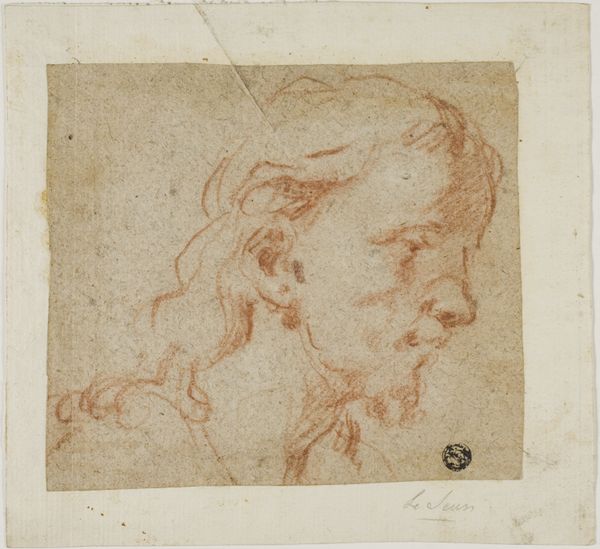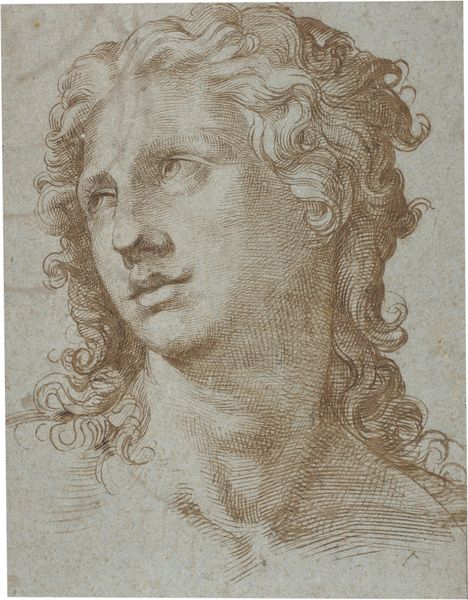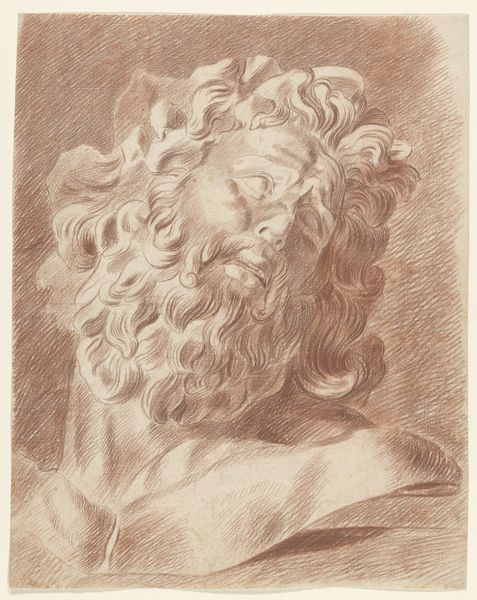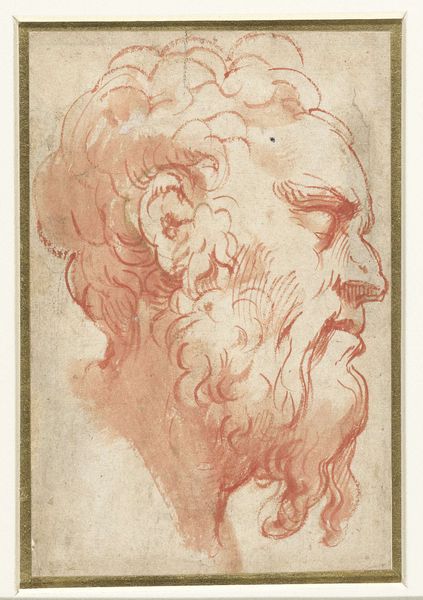
Portrait of Leonardo da Vinci 1516
0:00
0:00
francescomelzi
Royal Collection (Buckingham Palace), London, UK
drawing, pencil
#
portrait
#
drawing
#
self-portrait
#
figuration
#
11_renaissance
#
oil painting
#
pencil
#
line
#
italian-renaissance
Copyright: Public domain
Curator: This portrait immediately evokes a sense of wisdom and deep contemplation. There's a weight in his gaze, a quiet understanding etched onto his features. Editor: Indeed. Let's delve into this work. What we have here is a drawing titled "Portrait of Leonardo da Vinci." It's believed to have been created around 1516 by Francesco Melzi, one of Leonardo’s pupils. It’s rendered in pencil and currently resides in the Royal Collection in London. Curator: So, it is likely to be one of the most iconic representations we have of Leonardo himself, filtered through the eyes of someone who knew him well. I am particularly drawn to the texture and intricate rendering of his hair. Each strand seems to whisper stories of art, science, and boundless curiosity. Do you find that this medium -- this 'simple' drawing -- emphasizes the purity of thought or perhaps some degree of accessibility of such a towering Renaissance figure? Editor: It's intriguing to consider how the use of pencil, a readily accessible medium even then, might humanize Leonardo. Think about it: this wasn’t a commissioned oil painting, designed to project power. A drawing has an immediacy and vulnerability, especially as his fame rests more publicly on his painted work, so the public accessibility of this particular portrait may even rest in its 'behind-the-scenes' aesthetic. Curator: Absolutely. There's a sense of intimacy, too. The fact that Melzi chose this particular medium perhaps suggests an admiration beyond the maestro's public persona. Also consider the choice of pose, capturing a profile rather than the standard forward-facing portraits of nobility... He does not look directly at the viewer. Do you feel he looks 'at' anyone or anything specific in this representation, even if only conceptually? Editor: That’s a key question: what might Leonardo represent to us? I tend to think the very idea of “Renaissance Man” itself, which came to represent ideals about universal education accessible to all, has suffered since, through wars, economic hardship, political disenfranchisement and lack of resources. In effect, portraits like these of Leonardo become icons for lost social ambitions. Curator: So true. We see this quiet genius reflected in the marks on paper and, simultaneously, the shadows of our unfulfilled aspirations as a collective society. Editor: Ultimately, viewing it in our present political moment allows the piece to simultaneously symbolize both access and inaccessible, an emblem of high Renaissance aspiration tinged with both triumph and lament. Curator: An intriguing reflection indeed. Thank you for sharing that insightful and sociopolitical view. Editor: My pleasure.
Comments
No comments
Be the first to comment and join the conversation on the ultimate creative platform.
